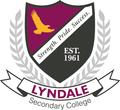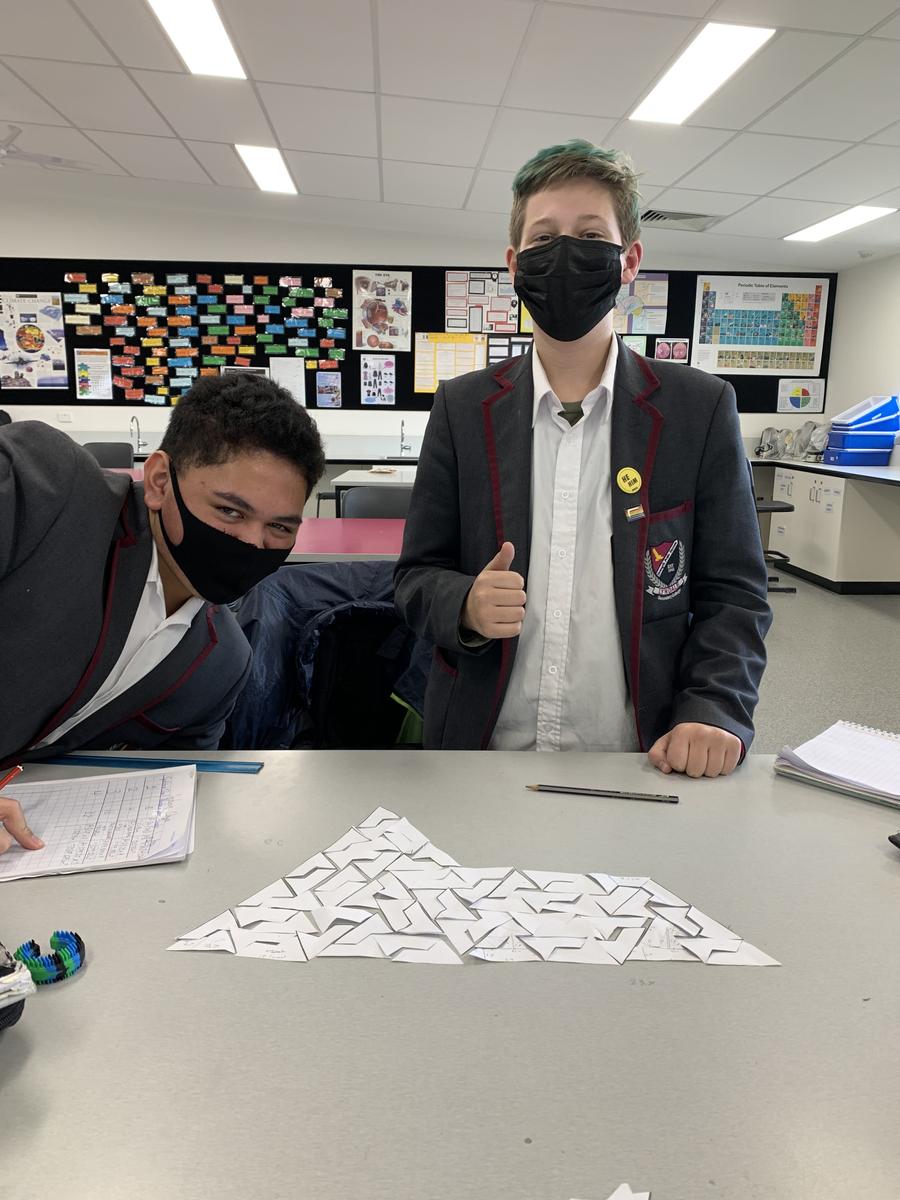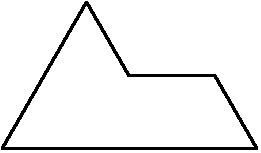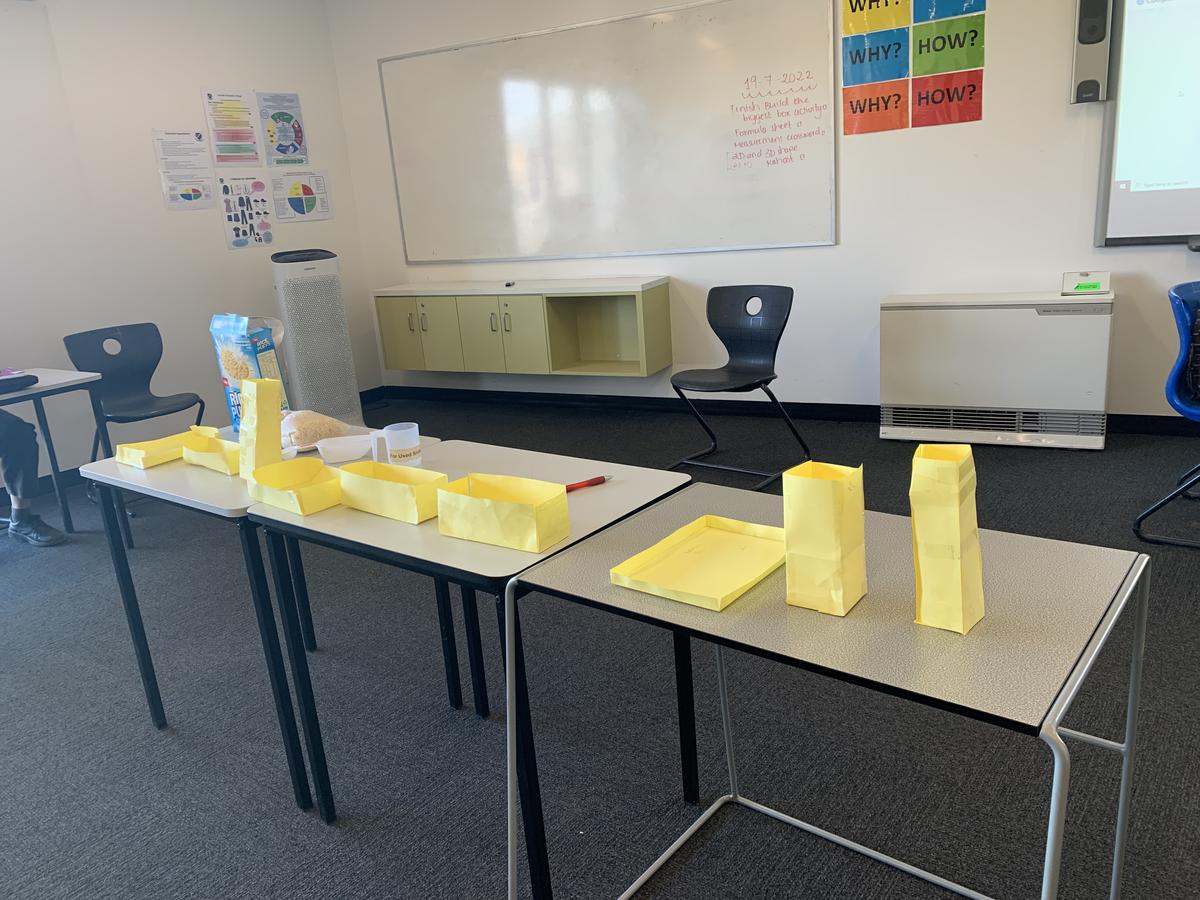Maths/Numeracy
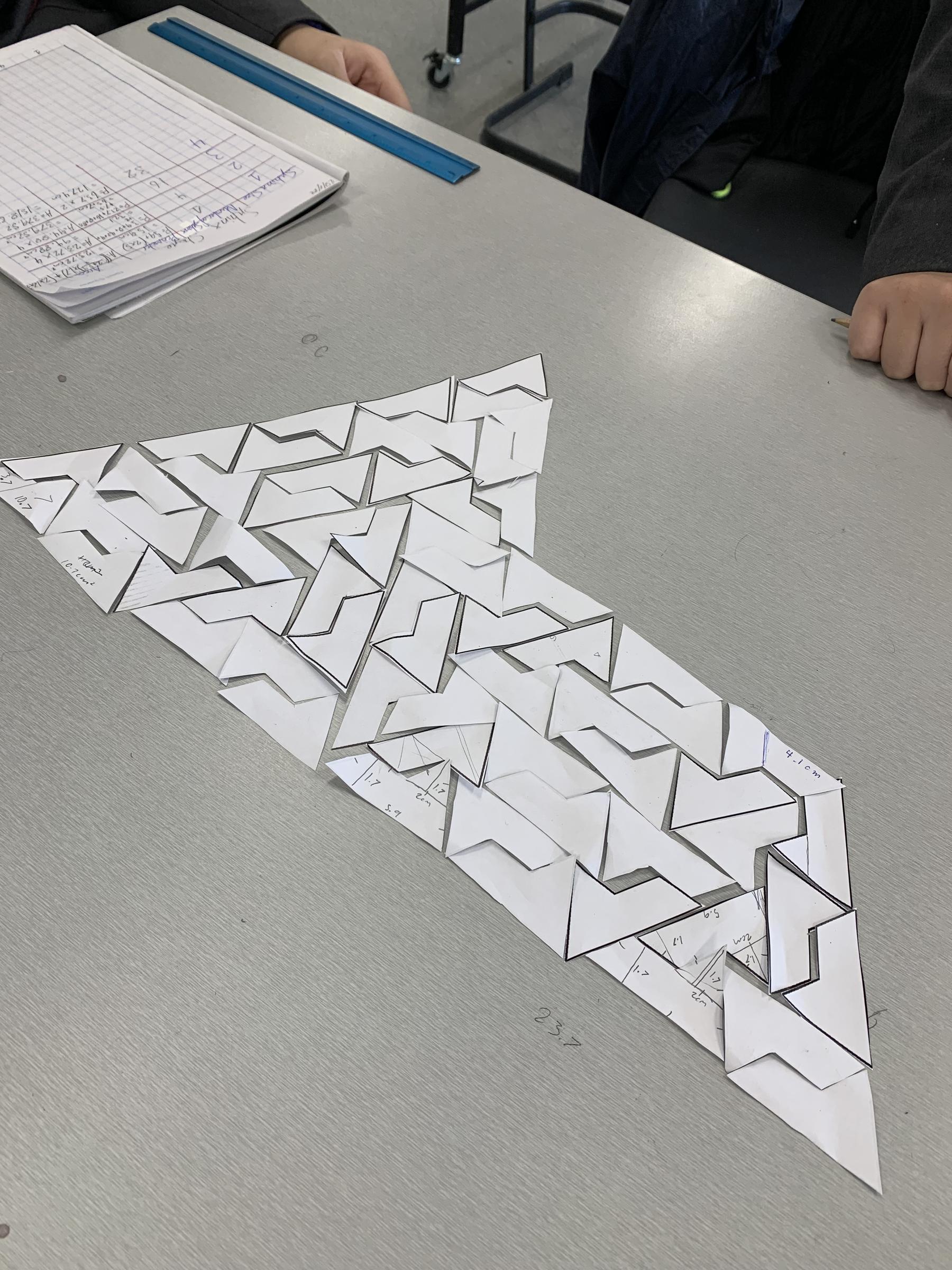
Sphinx Pyramid Puzzle
Hello my name is Ceedyn and I am in 9E. On the 28th July, during numeracy, we had to calculate the area and perimeter of a sphinx, which looks like a triangle on one side of a trapezium.
During this activity, we all worked independently to find its area and perimeter, but then Mr Andersen gave us a challenge to make bigger sphinxes together in a certain way, and then calculate the area and perimeter of its bigger version.
It was pretty simple and straight forward, but we did have some trouble trying to make the first combination of sphinxes. Although, when the teacher offered his help, we managed to get an idea on how it was done from there.
As the sphinx combination increased in size, so did the number of sphinxes, so the goal was to work with other people so we could use their sphinxes to make it bigger. I worked together with my friend Alex to make the second combination, requiring 16 sphinxes. Mr Andersen said that we didn't need to make the last combination, requiring 32 sphinxes, because it would take too long, but Alex and I took that challenge on. So during the last quarter of the lesson we were stealing other people's sphinxes to add on to ours, and it lasted around 15 minutes longer during our lunch break until it we finally completed it.
We were so thrilled and relieved that it was finally done, until Mr Andersen told us to calculate its area and perimeter and then put it in a graph, but it wasn't too difficult, all we had to do was multiply the perimeter of the last sphinx's perimeter by two and its area by 4.
We learnt a lot from this activity and we can always use our thinking and patience to persevere through a challenge.
Ceedyn Jack Cummings
9E
Can you build the biggest box using one piece of paper?
During Term 3, students in Years 7 - 9 maths focus on measurement and geometry. To develop understanding in volume and data, 8D students were given 30 minutes to create the biggest box possible using one piece of construction paper. Students used only scissors and tape to construct a box and determine how much puffed rice it can hold. They plotted the class data, comparing measured to calculated volumes for each box.
8D also discussed how the concepts of volume and design iteration are important for engineers in their need to understand the concept of volume — everything from product packaging and fuel tank sizing to inventory organization and sports arena layouts.
Have a go at building the biggest box using the resources below:
https://www.teachengineering.org/activities/view/cub_scale_model_lesson01_activity1
Mangahigh Achievement Report
At Lyndale, students across all year levels can use Mangahigh as a game-based learning platform for mathematics.
On Mangahigh, students complete activities to earn medals; bronze, silver or gold. Earning medals is the way that students show teachers that they have reached minimum standards in their understanding of the concept covered by that activity.
Congratulations to our Top 10 Students (1 Sept - 30 Sept). Keep up the great work.
- Joshna Senthil Kumar (15 pts)
- Anisa Khan (14 pts)
- Lincoln Leighton (13 pts)
- Ayman Mannasaheb (10 pts)
- Eshlyn Kumar (9 pts)
- Maryam Mohseni (7 pts)
- Tvaritha Karthik (6 pts)
- Marko Zelic (6 pts)
- Shraddha Kapadia (6 pts)
- Mahdia Hadi (6 pts)
Karen Huynh
Maths and Numeracy Teacher
